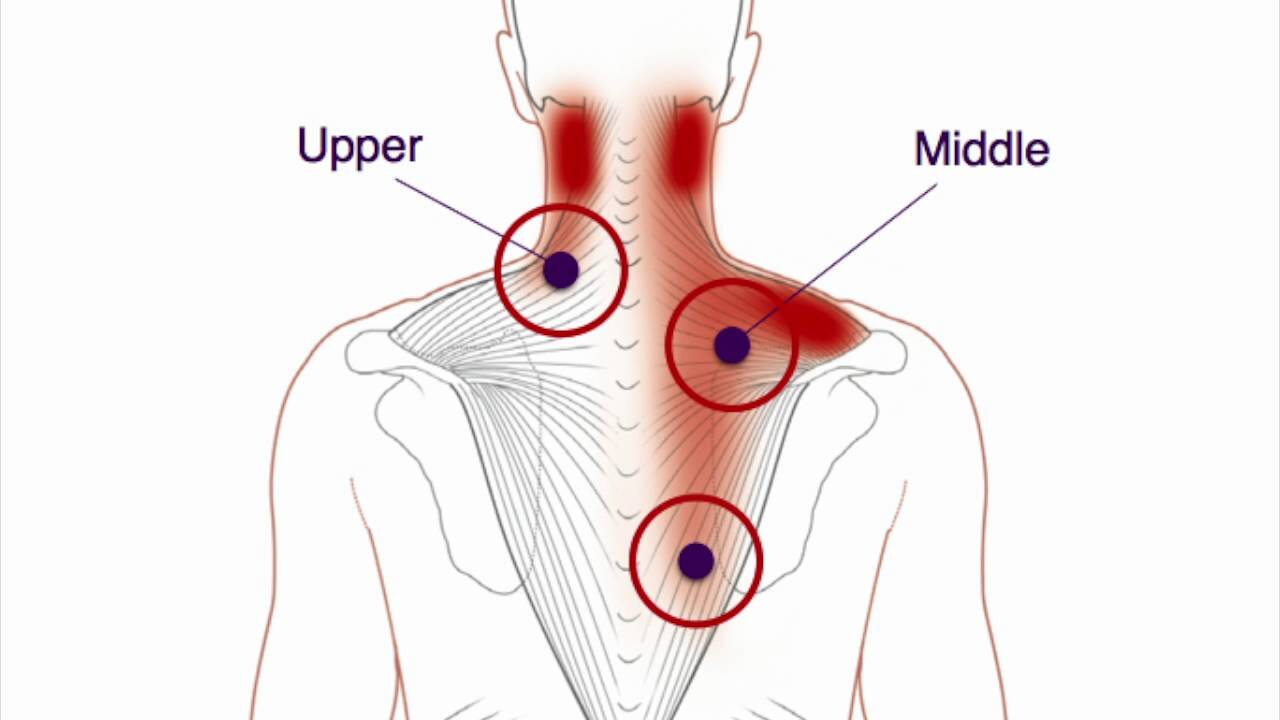Trapezius Trigger Points
Have you ever felt a particularly tight band in one of your muscles? Maybe when you press on it, you can actually feel a knot that feels tender.
Sometimes that knot will refer pain to other areas in the body. For example, a knot in your upper back might refer pain into your head, causing a headache. A knot in the muscle over the shoulder blade cause cause pain in the front of your shoulder. A knot in your lower back can cause pain in your groin and hip area.
In the pictures above, you will see an "x" or a dot where the trigger point is located. The areas of concentrated and scattered red represent the referred pain.
These "knots" are known as trigger points, which are tight bands of muscle that produce pain locally at the spot, and "distally" (away) from the area. Hence, sometimes that nagging headache in the back of your head is pain referred from a tight muscle in your back.
What can you do about trigger points?
Left untreated, trigger points can cause chronic pain and tightness. One of the most effective methods for releasing trigger points is the trigger point release acupuncture technique (what some refer to as dry-needling).
Essentially, you are feeling your muscle contract and release out of a spasm, which helps the muscle stay in a relaxed state. After a few sessions of trigger point release, adhesions, tension and muscle knots are typically much less and the muscle is more relaxed.
Minimal soreness after treatment is normal, and within 24 hours you should feel a significant decrease in tension and referred pain from the affected muscle.
Trigger point needling should only be performed by a trained and licensed acupuncturist.
This technique is not appropriate for every patient, however, can be extremely effective if used properly. If you are unsure whether trigger point needling is right for you, we'd be happy to talk about it further!

